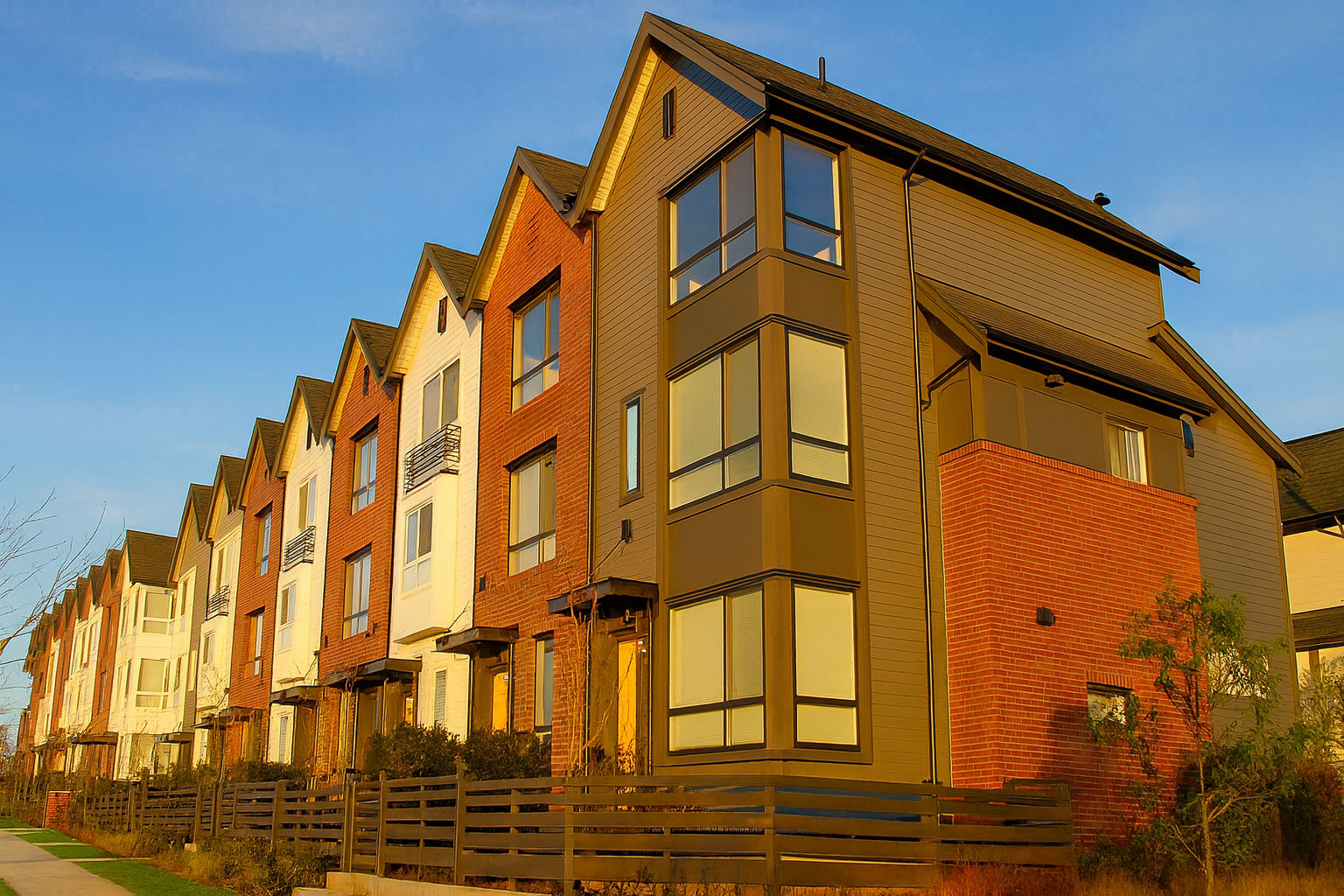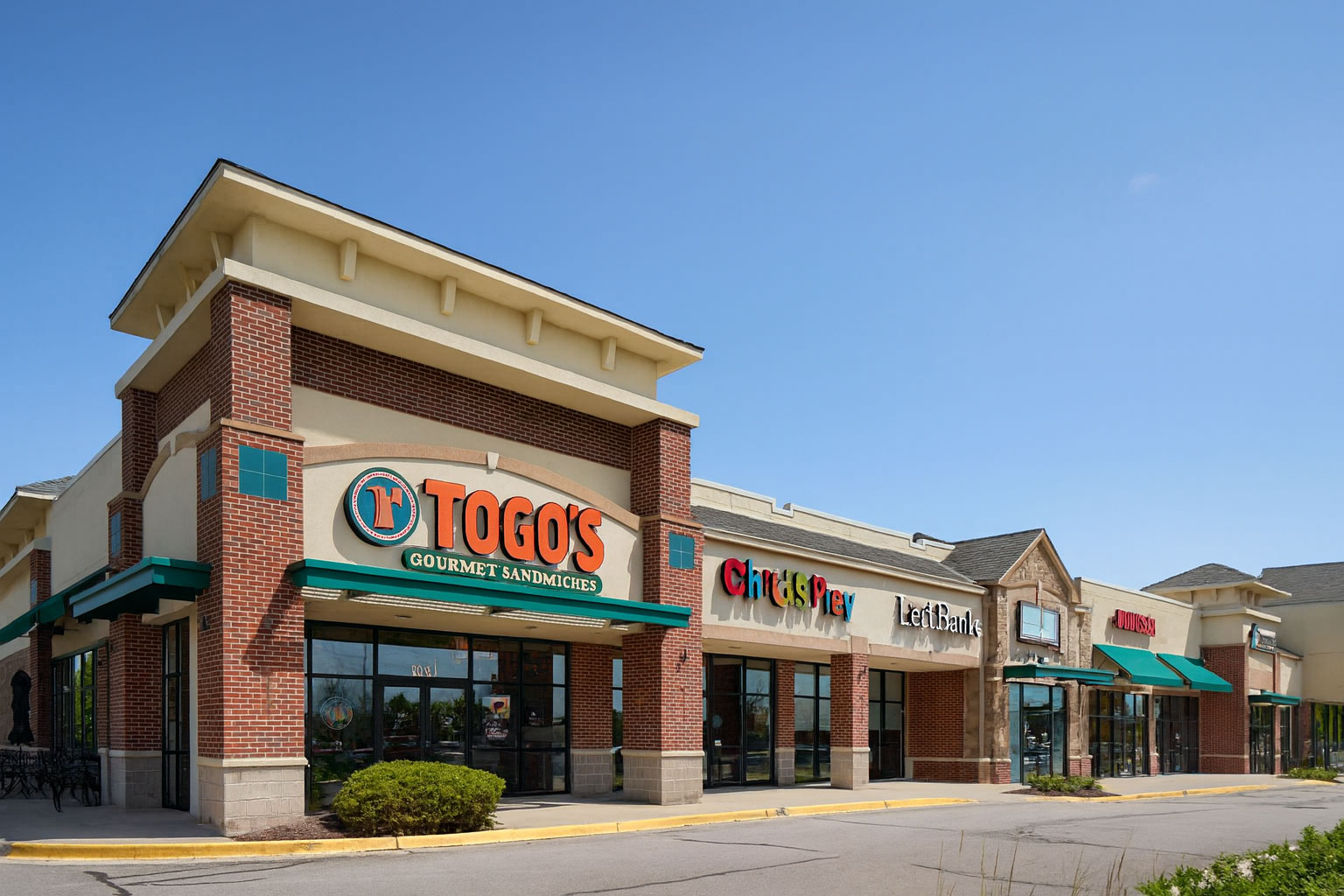Today's CMBS Loan Rates
CMBS Loan Rates - Updated 1/04/26
| CMBS Loan Rates | Free Loan Quote | ||
|---|---|---|---|
| Loan Type | Rate* | LTV | |
| 10-Year Fixed Loan Rate | 6.14%-6.99% | Up to 75% | |
2025 CMBS Loan Outlook: Trends, Challenges, and Opportunities

As we move through 2025, the commercial mortgage-backed securities (CMBS) market continues to evolve in response to shifting economic conditions, interest rate fluctuations, and the performance of key property sectors. While multifamily and industrial assets remain strong, challenges persist in the office and retail sectors, shaping investor sentiment and CMBS issuance strategies.
In this report, Select Commercial, a leading expert in CMBS loans, examines the key factors impacting the market and what borrowers and investors can expect in the year ahead.
Interest Rates and Inflation: A Pivotal Factor for CMBS
The direction of interest rates remains one of the most significant influences on CMBS loan performance. The Federal Reserve's past rate hikes in response to inflationary pressures have led to higher borrowing costs for commercial real estate, impacting loan origination and refinancing activity.
However, as inflation has shown signs of moderation, the Federal Reserve has begun to cut short-term rates which will hopefully result in lower long-term mortgage rates. A steady or slightly declining rate environment could:
- Encourage new CMBS issuances by improving affordability.
- Support increased investor demand for CMBS securities as spreads become more attractive.
- Reduce refinancing risk for borrowers facing loan maturities.
Despite this optimism, any unexpected inflationary trends or global economic disruptions could cause volatility, affecting CMBS pricing and spreads.
Property Sector Performance: Diverging Trends in CMBS Loans

The performance of CMBS-backed commercial real estate loans is highly dependent on the strength of their underlying asset classes. In 2025, property sectors continue to show mixed signals, with some outperforming while others struggle with vacancy rates and market shifts.
Multifamily: A CMBS Loan Bright Spot
The multifamily sector remains one of the strongest performers in CMBS, benefiting from high rental demand and population growth in urban centers. However, rising affordability concerns, rent regulations, and oversupply in certain markets could introduce risk.
Key trends in multifamily CMBS loans:
• Steady rent growth and occupancy rates support loan performance.
• High investor demand for multifamily-backed CMBS deals.
• Potential challenges from local rent control laws and regulatory policies.
Industrial: Logistics Demand Keeps CMBS Loans Strong
The industrial sector, particularly logistics and warehousing, continues to see low vacancy rates and strong rent growth due to e-commerce expansion and supply chain realignments.
Industrial CMBS loans are expected to remain a stable investment choice, with:
• Increased issuance of CMBS deals tied to logistics properties.
• High investor confidence in industrial-backed securities.
• Minimal risk compared to struggling sectors like office and retail.
Office: The Biggest Question Mark for CMBS Loans

The office sector continues to be the biggest source of uncertainty for CMBS investors. National office vacancy has climbed to around 20% in 2024 and 2025, the highest level on record, and many Class B and Class C buildings in older downtown locations report vacancies well above that. At the same time, effective rents have been roughly flat or declining in several markets, which puts pressure on net operating income, debt service coverage, and refinance options for CMBS borrowers.
Office loan performance in CMBS also reflects this stress. Office specific CMBS delinquency rates are now in the high single digits, close to 10%, and stand well above the broader CMBS market. These stresses are colliding with a large commercial real estate maturity wall, with an estimated one trillion dollars or more of CRE loans coming due in 2025, and a few hundred billion of that tied to office through 2027. Many of those loans will need to be refinanced at higher interest rates and lower leverage.
Against that backdrop, lower tier and commodity office buildings face:
• Higher default risks on CMBS loans as office delinquency approaches 10% and cash flows remain under pressure.• Significant refinancing challenges as maturing office loans are underwritten at higher rates, lower proceeds, and values that are often 20 to 30 percent below pre pandemic pricing.
• Selective investor appetite, with many trades clearing at steep discounts, which weakens pricing and execution for CMBS backed office deals.
Given these conditions, lenders remain cautious about new CMBS originations for office properties unless the collateral is well leased, in a durable location, and backed by strong credit tenants on long term leases. Even for higher quality assets, proceeds, pricing, and structure are generally more conservative than in the prior cycle.
Retail: Selective Success in CMBS Financing

Retail has been far more resilient than many expected. National shopping center and retail vacancy is holding in the mid single digits, with occupancy around the mid ninety percent range in many markets. In several recent reports, shopping center occupancy is cited around 95 to 96 percent, while average asking rents have increased a little over 4 percent year over year and retail sales have grown more than 5 percent. Limited new construction, with only a few million square feet of new space coming online recently, has created a scarcity of quality space even as some chains continue to close stores.
Within the sector, grocery anchored and open air centers stand out as strong performers. Occupancy at grocery anchored strip centers has been reported around 92 percent, compared with under 90 percent for non grocery anchored peers. Many open air centers have posted strong leasing and notable net operating income growth in the post pandemic period, with some portfolios showing double digit increases supported by steady tenant sales and demand for well located neighborhood and community centers.
By contrast, weaker malls and non essential retail remain a source of stress for CMBS investors. Retail CMBS delinquency has moved into the mid to high single digits in recent data, roughly in the 6 to 7 percent range, and has shown one of the larger year over year increases among major property types. Performance is highly bifurcated, with dominant centers and well leased strips performing solidly while obsolete or poorly located properties struggle with higher vacancies, weaker rents, and valuation pressure.
Key factors impacting retail CMBS loans:
• Prime, grocery anchored, and open air centers with occupancy in the low to mid ninety percent range and healthy tenant sales continue to perform well and remain in favor with CMBS investors.• Weaker malls and non essential retail centers show much higher credit risk, contributing to retail CMBS delinquency rates in the mid to high single digits and making refinances more challenging.
• CMBS buyers are increasingly selective, favoring retail collateral with stable, long term tenants, solid rent growth, and limited near term rollover, while requiring stronger structure or pricing discounts for older or secondary assets.
CMBS Loan Credit Performance & Risk Factors
Despite economic uncertainty, loan delinquencies and defaults in CMBS deals remain manageable, though certain sectors face increased scrutiny.
Key Risk Factors for CMBS Loan Performance
- Loan Maturity & Refinancing Risk: Many CMBS loans originated in lower-rate environments are now facing higher refinancing costs.
- Debt Service Coverage Ratios (DSCR): Borrowers in weaker asset classes (especially office and retail) may struggle to maintain adequate cash flows.
- Special Servicing & Loan Workouts: An increase in troubled assets entering special servicing is expected in 2025.
CMBS issuers and investors will continue to favor high-quality assets and strong credit borrowers while exercising caution on underperforming property types.
Regulatory and ESG Considerations in CMBS
Regulatory policies and ESG (Environmental, Social, and Governance) factors are playing an increasing role in CMBS loan structuring. Investors and institutional buyers are prioritizing green and energy-efficient properties, while regulators continue to monitor risk in commercial mortgage-backed securities markets.
Key ESG Trends in CMBS Loans:
- Increased demand for “Green CMBS” transactions.
- Tighter lending standards for energy-inefficient buildings.
- Regulatory focus on transparency and risk management in structured finance.
Borrowers looking for CMBS loan financing should consider upgrading properties to meet energy efficiency standards, as ESG-compliant assets may secure better loan terms and investor demand.
CMBS Loan Outlook for 2025: What to Expect?
Despite some sector-specific challenges, the CMBS market remains a viable source of commercial real estate financing in 2025.
Key takeaways for borrowers and investors:
- Interest rates stabilizing could drive stronger issuance volumes.
- Multifamily and industrial sectors remain the strongest performers.
- Office and retail-backed CMBS deals will be carefully structured.
- Lenders will maintain conservative underwriting for riskier asset classes.
- ESG considerations will shape new CMBS loan structures.
Select Commercial: Your Partner for the Best CMBS Loan Rates & Terms
For borrowers looking to secure the best CMBS loan rates in 2025, Select Commercial offers expert guidance, competitive terms, and access to top lenders. With deep expertise in the commercial mortgage-backed securities market, our team helps investors and property owners find the right financing solutions for multifamily, industrial, office, and retail properties.
Contact Select Commercial today to explore your CMBS loan options and secure the best rates available!



